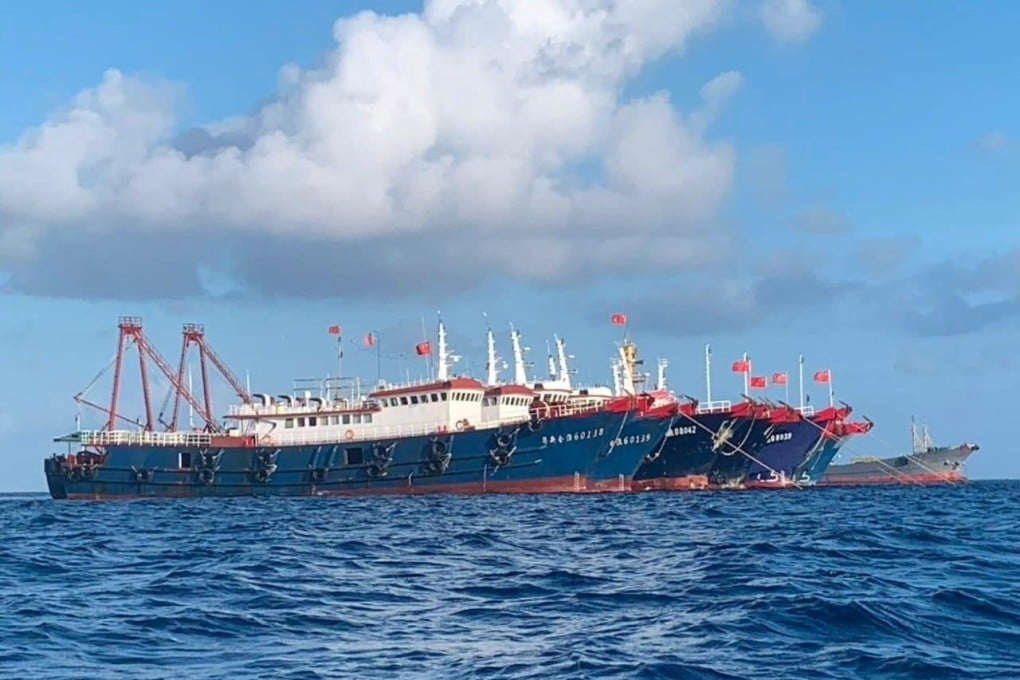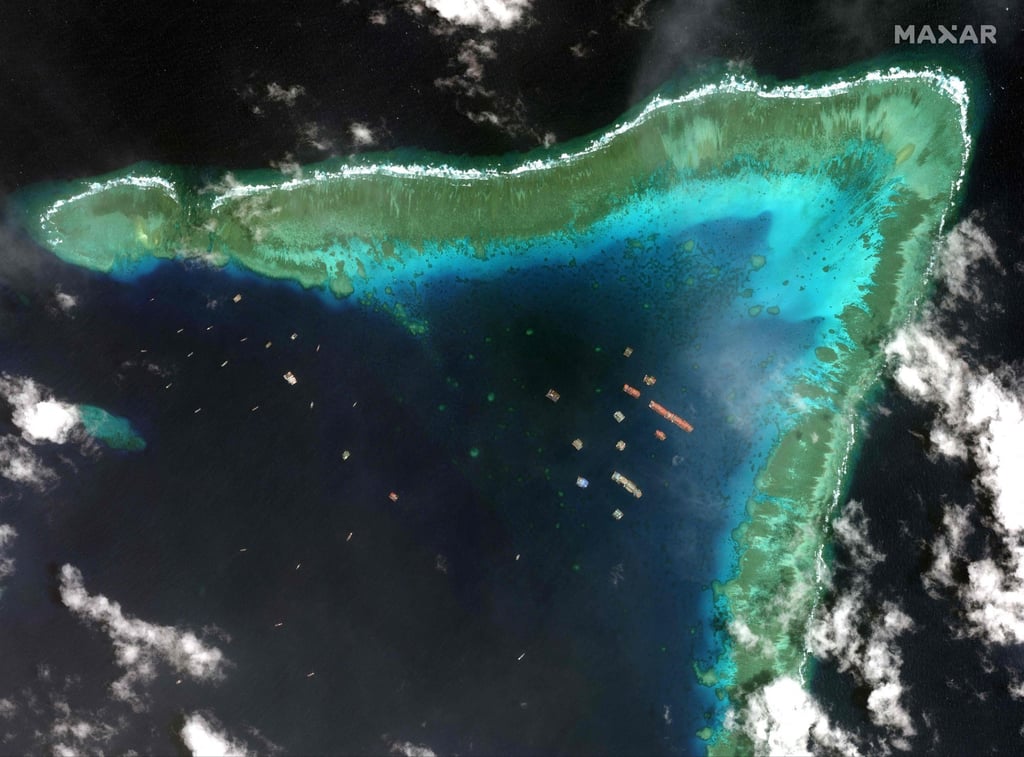South China Sea: Philippine military vows to continue aerial patrols after plane warned off by Chinese vessels near disputed reef
- Chinese radio operators challenged the aircraft with local journalists on board ‘at least five times’ as it flew over Calderon Reef, Mischief Reef and Johnson Reef
- The Philippines has been carrying out ‘sovereignty patrols’ since some 200 Chinese fishing vessels were spotted near Whitsun Reef, which falls within its exclusive economic zone

A Philippine military plane with local journalists on board ignored repeated radio warnings to “stay away” and “leave immediately” on Tuesday as it flew low over contested reefs near where Chinese vessels were moored in the South China Sea.
Marine Major General Edgard Arevalo, spokesman for the Philippines’ armed forces, dismissed Tuesday’s warnings that came from Chinese military outposts on occupied artificial reefs in the disputed waterway and said that the military overflights would continue, telling This Week In Asia “We regularly conduct air and naval patrols aside from other relevant measures to ensure maritime situational awareness. And if I may, those challenges have been customary”. “Our reply is likewise customary: ‘this is a Philippine government aircraft conducting a routine maritime patrol over the Philippines’ exclusive economic zone (EEZ). We are proceeding according to our planned route’,” he said.

In a statement issued last week, the Chinese embassy in Manila rejected descriptions of the 200 or more ships as a militia, saying they were merely fishing vessels taking refuge from rough seas.
The Philippine aircraft that conducted Tuesday’s patrol was “challenged at least five times” as it flew over Calderon Reef, Mischief Reef and Johnson Reef, according to Chiara Zambrano, a veteran ABS-CBN reporter who was on board at the time. She later said on Twitter it had been “both chilling and sobering” to witness first-hand the completed islands that China has built to stake its claim to the disputed waterway.
In an audio recording of one of the challenges, a voice speaking in Mandarin can be heard identifying itself as “Chigua Jiao” – the name China uses for Johnson South Reef – before adding: “You are already close to China’s islands and reefs. To avoid misjudgment, please stay away immediately.”